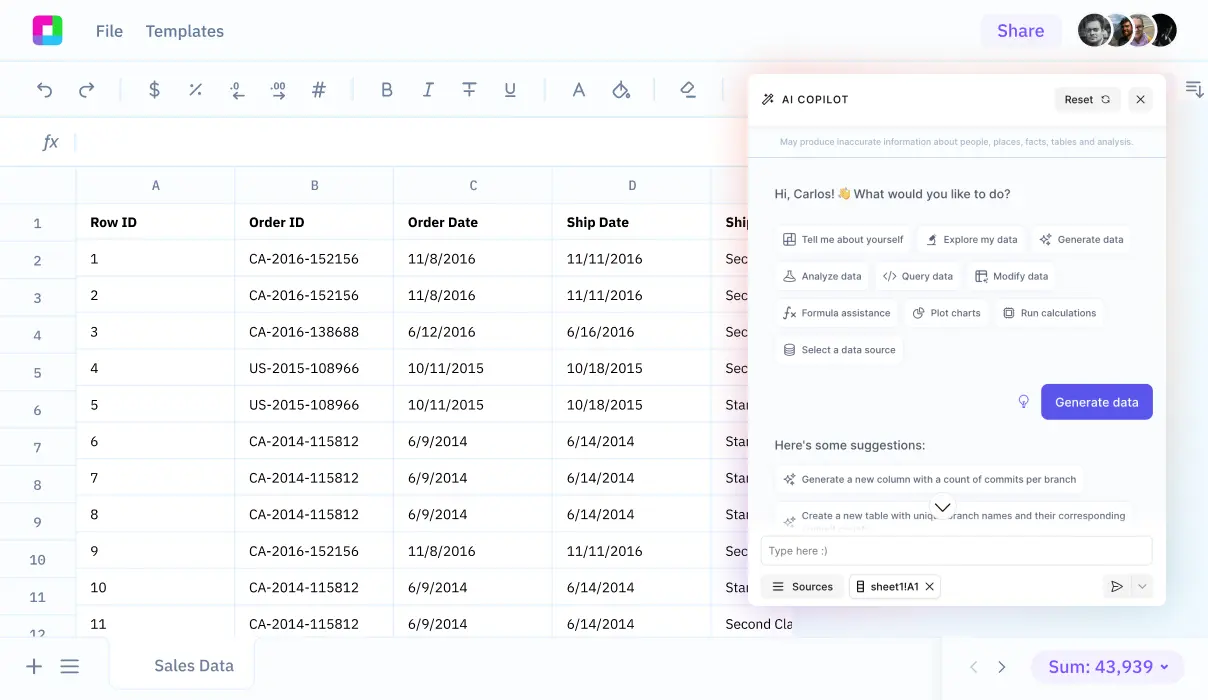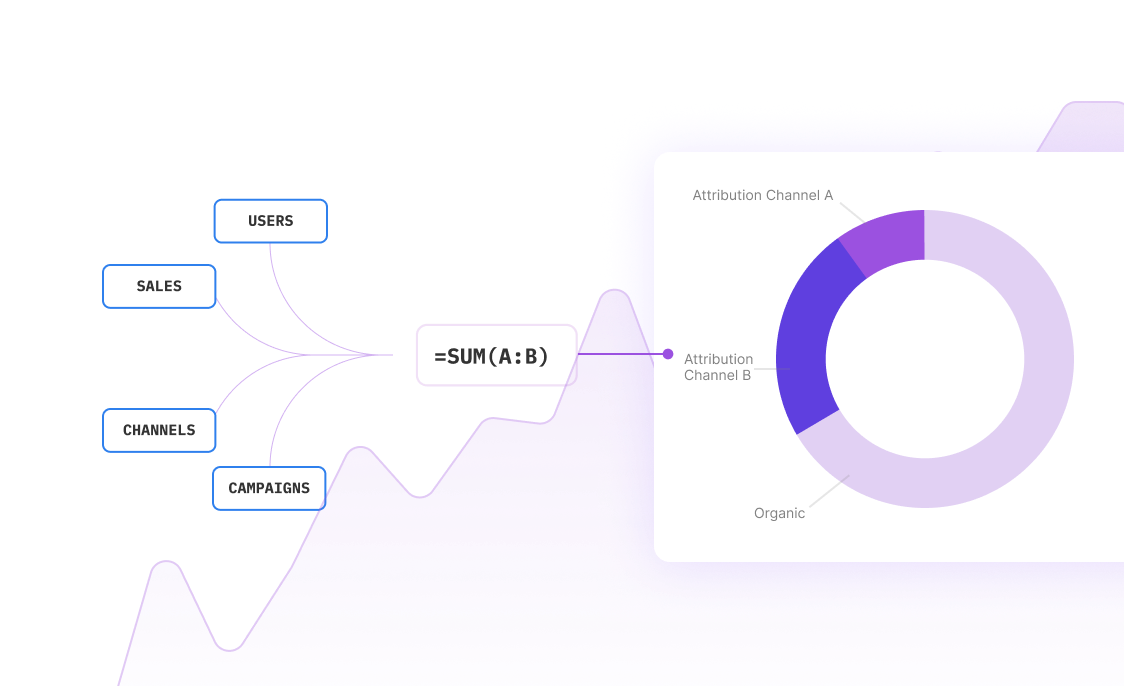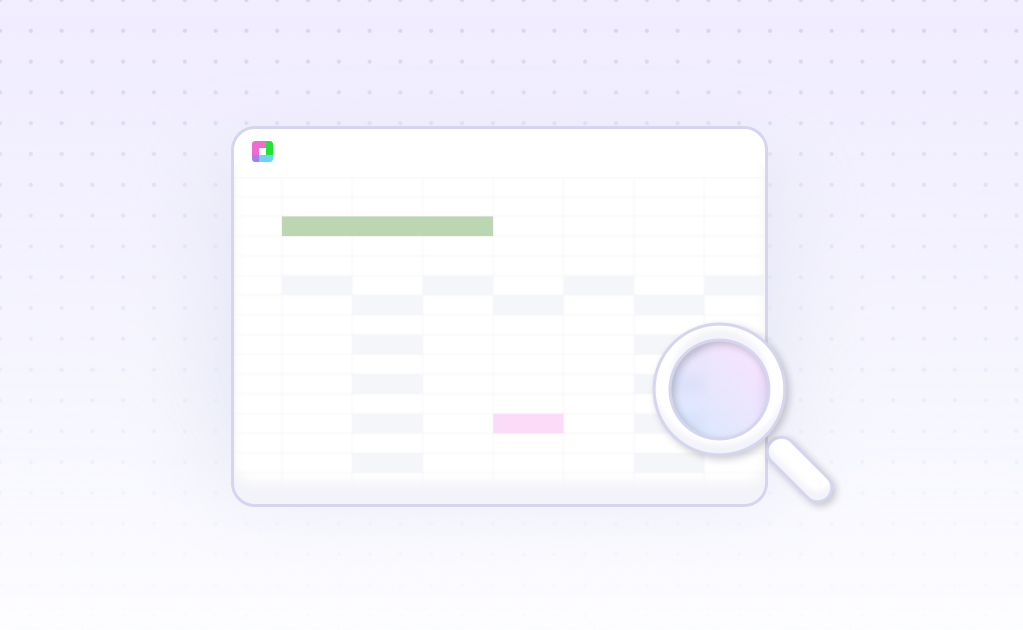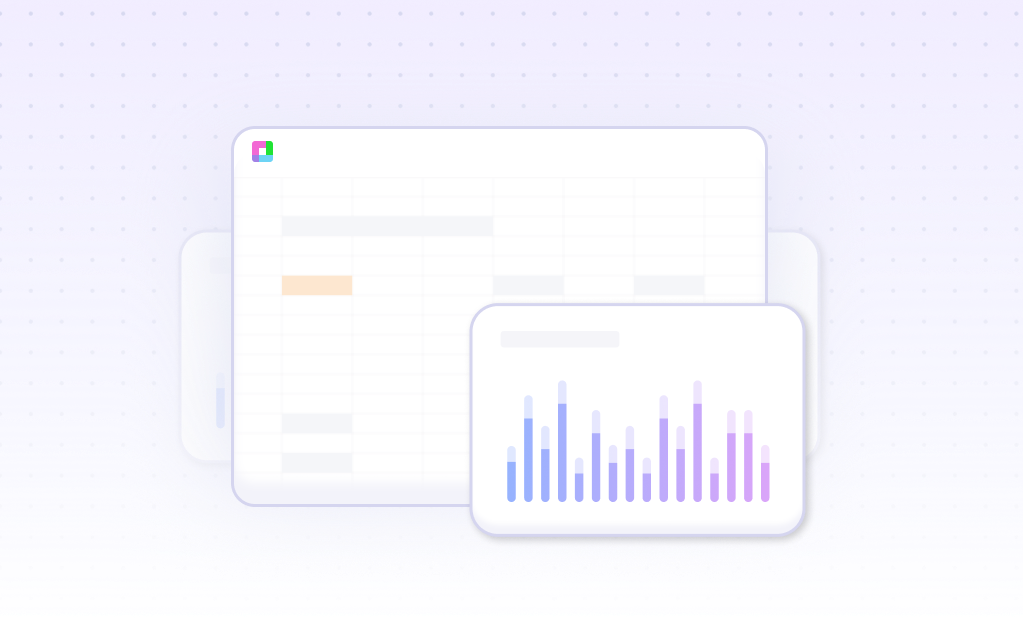
Introduction
Cointegration analysis reveals long-term relationships between time series data, particularly in financial markets where spot and forward exchange rates often move together. Traditional approaches use specialized statistical software like XLSTAT in Excel to perform Johansen's cointegration test on I(1) processes. This method examines if two non-stationary series can combine to form a stationary relationship.
While Excel requires statistical expertise and add-ons, modern AI alternatives like Sourcetable streamline the analysis process. Sourcetable combines Excel's functionality with AI-driven insights, automatically generating complex formulas and visualizations. Its integration with SQL and Python enables advanced statistical analysis without extensive technical knowledge.
This guide will demonstrate how Sourcetable's AI capabilities simplify cointegration analysis, which you can explore at sourcetable.com/signup.
Why Sourcetable Is the Best Tool for Cointegration Analysis
Sourcetable combines AI-powered automation with advanced spreadsheet functionality to streamline cointegration analysis. While Excel offers basic spreadsheet features, Sourcetable's AI capabilities automate the identification of long-term relationships between time series data, saving hours of manual calculation.
Cointegration analysis requires complex statistical testing through methods like the Engle-Granger method, Johansen test, and Phillips-Ouliaris test. Sourcetable's AI automatically identifies correlations and trends, enabling faster and more accurate testing compared to manual Excel calculations.
Both Sourcetable and Excel offer spreadsheet features like calculators, charting, and collaboration. However, Sourcetable's AI-enhanced data interpretation extracts deeper insights from large datasets, making it superior for analyzing the sensitivity between cointegrated variables.
Sourcetable eliminates the risk of spurious correlations common in Excel's linear regression analysis. Its automated system precisely identifies when multiple time series are integrated and cannot deviate from equilibrium long-term, providing more reliable results than traditional spreadsheet methods.
Benefits of Cointegration Analysis with Sourcetable
Why Use Cointegration Analysis
Cointegration analysis provides essential insights into long-term relationships between time series processes without producing spurious correlations. Unlike traditional methods, it can identify multiple cointegrating relationships simultaneously and does not require stationary processes.
Advantages of Using Sourcetable
Sourcetable's AI-powered interface streamlines cointegration analysis through powerful data processing capabilities and easy visualization tools. The platform enables quick organization and analysis of CSV data files with superior reliability and speed.
Sourcetable vs Excel for Cointegration Analysis
Sourcetable's AI assistant feature simplifies complex data analysis tasks that would be cumbersome in traditional spreadsheets. Its integrated AI capabilities allow for efficient data processing and visualization, making cointegration analysis more accessible and faster than Excel-based methods.
Cointegration Analysis with Sourcetable: Advanced Time Series Testing
Sourcetable provides powerful tools for conducting cointegration analysis through its integration with SQL and Python. The platform enables both Engle-Granger and Johansen tests for analyzing multiple time series relationships.
Engle-Granger Testing
Through Sourcetable's automated formula generation and data cleaning capabilities, users can efficiently perform Engle-Granger tests. This method analyzes residuals from static regression and tests for unit roots using the Augmented Dickey-Fuller Test (ADF) to determine stationarity.
Johansen Testing Methods
Sourcetable supports both trace tests and Maximum Eigenvalue tests for multiple cointegrating relationships. The platform's connectivity with over 100 data sources enables comprehensive time series analysis across various financial datasets from platforms like Quickbooks.
Automated Analysis Features
Sourcetable automates complex formula generation and data cleaning processes essential for cointegration testing. The platform's integration capabilities allow seamless implementation of statistical functions and advanced time series analysis methods through Python and SQL connections.
Cointegration Analysis Use Cases with Sourcetable
Environmental Trend Removal in Structural Monitoring |
Remove environmental trends from structural health monitoring data using Sourcetable's cointegration analysis capabilities. This novel approach enables more accurate structural health assessments. |
Outlier Detection with Robust Estimation |
Identify outliers in time series data using cointegration analysis with the MCD estimator. This method provides robust location and scatter estimates while remaining resistant to outliers. |
Natural Frequency Regression Modeling |
Establish regression models of natural frequencies through cointegration analysis. Remove common trends from original data to map residuals and identify significant variations. |
Damage Detection Enhancement |
Enhance damage detection by revealing benign variability through cointegration analysis with robust outlier detection. This approach helps distinguish between normal variations and actual structural damage. |
Frequently Asked Questions
What is cointegration analysis and why is it useful?
Cointegration analysis is a statistical technique for finding correlations between time series processes that cannot deviate from an equilibrium state over the long term. It's particularly valuable for discovering hidden synchronicity in time series data and has practical applications in risk management, portfolio optimization, and economic analysis.
What are the main types of cointegration tests?
The main cointegration tests include the Engle-Granger test, Johansen test, Phillips-Ouliaris test, Gregory-Hansen test, Hatemi-J test, and Maki test. These tests were introduced following Engle and Granger's 1987 work showing that correlation in time series analysis should not rely on linear regression.
How do I perform cointegration analysis in Sourcetable?
In Sourcetable, you can perform cointegration analysis using the coint_ghansen function. This function requires inputs including a vector of the dependent variable (y), a matrix of independent variables (X), model specification for regime shifts, bandwidth for kernel estimator, maximum number of lags, information criteria selection, variance type, and trim amount for break date consideration.
Conclusion
Cointegration analysis in Excel requires XLSTAT, which performs comprehensive VAR-based tests displaying order estimation, lambda max tests, trace tests, and adjustment coefficients. While XLSTAT offers robust functionality for multiple time series analysis, modern AI alternatives streamline the process.
Sourcetable combines AI-powered analytics with spreadsheet functionality, enabling natural language commands for complex statistical operations. This AI spreadsheet integrates with over 100 data sources and accelerates data analysis tasks without requiring advanced Excel expertise. To explore how Sourcetable can simplify your cointegration analysis, sign up for a free account.
Recommended Analysis Guides
Connect your most-used data sources and tools to Sourcetable for seamless analysis.
Frequently Asked Questions
If your question is not covered here, you can contact our team.
Contact Us




